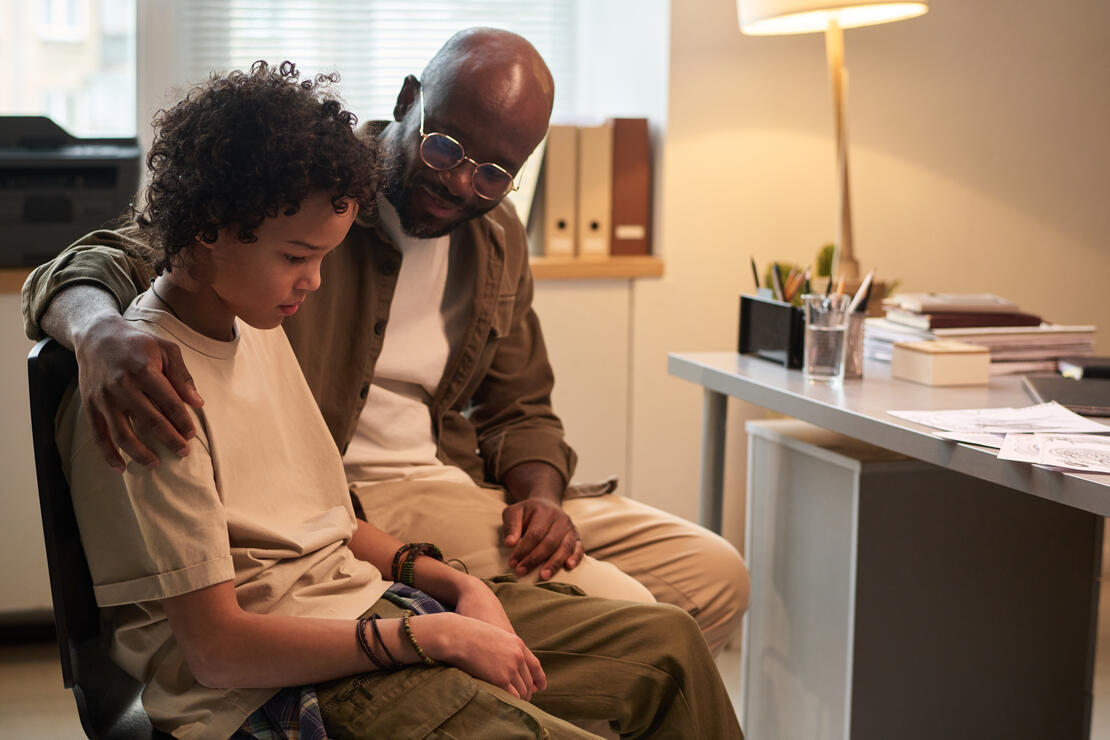Back-to-School Transitions: How to Help a Child With Anxiety

The beginning of a new school year is often defined by anticipation. For some students, the newness brings excitement. For others, the unknown sparks anxiety. However the kids in your life respond to the back-to-school season, it’s likely those emotions affect you, too. Rishi Gautam, MD, chair of Psychiatry and Behavioral Health at LifeBridge Health and a board-certified child and adolescent psychiatrist, works closely with families navigating these transitions.
Common Stressors Kids Face at School
Children face different stressors depending on where they are in their school journey. A few of the most common include:
- Changing schools: Moving from elementary to middle or middle to high school can spark anticipatory anxiety. New hallways, new teachers and bigger class sizes may feel overwhelming.
- New social circles: Making friends or finding a place in a group can be stressful, especially after a long summer away.
- Academic pressure: As students get older, coursework becomes more demanding. “Junior year especially can be quite intense, with college applications and other extracurriculars students are focused on,” says Dr. Gautam.
And while the pandemic is no longer top of mind for many adults, its effects are still felt in classrooms. “The pandemic was a huge disruptor in the overall development of children,” Dr. Gautam notes. For students who spent much of their early schooling online, adjusting to large in-person classrooms can still be a challenge.
Recognizing the Signs of Anxiety in Children
Even when children are unable to communicate that they feel anxious, their behavior may tell the story. Dr. Gautam describes this as “internal distress that gets manifested in everyday routines and behaviors.”
If you’re concerned that your child—or a child in your life—is struggling, watch for:
- Emotional changes: Increasing irritability, frustration or annoyance
- Behavioral shifts: Becoming argumentative, oppositional or more reactive than usual
- Social withdrawal: Isolating in their room or pulling away from friends and family
- Disrupted routines: Trouble sleeping, changes in eating habits or skipping meals
- Physical inactivity: Loss of interest in play, sports or regular exercise
Age also shapes how anxiety looks. Younger children may complain of headaches, tummy aches or other body pains, or show distress through irritability, fighting or tantrums. Adolescents and teens are often better able to voice their concerns and may even ask to talk when something feels wrong.
Talking About Mental Health and Supporting Your Child
Recognizing anxiety is one thing; responding to it is another. Parents may worry about saying the wrong thing, but simply starting the conversation can make a difference.
“Mental health conditions are very common and can affect anyone. Acknowledging this with your child is the first step,” says Dr. Gautam. When children know their feelings are valid and taken seriously, they’re more likely to open up. From there, you can:
- Normalize mental health: Emphasize that it’s just as important as physical health.
- Create safe spaces: Make sure your child knows they can talk openly and be heard.
When it comes to back-to-school anxiety specifically, Dr. Gautam encourages families to focus on preparation and giving kids a sense of control:
- Ask your child how they’d like to approach the transition.
- Reset sleep routines at least a week before school begins.
- Tour the school ahead of time so it feels less overwhelming.
- Meet teachers, counselors and classmates early to build familiarity.
- Review the class schedule or syllabus together to set expectations.
- Purchase and pack school supplies early.
Creating fewer unknowns can help children feel more confident as the school year begins.
Working With Schools
Managing anxiety in children often requires ongoing support. “Teachers and counselors play a crucial part in children’s overall development, including their mental health and psychological development,” says Dr. Gautam.
Encourage your child to build trusting relationships with adults they feel comfortable confiding in, and keep communication open with their educators. Regular check-ins and a collaborative mindset create a stronger support system.
“It really is a proverbial village that needs to come together to raise each child,” Dr. Gautam emphasizes.
Knowing When to Seek Professional Help
Sometimes the proverbial village needs the support of a professional. Dr. Gautam explains that functioning is a key focus when evaluating pediatric patients. Parents should seek help from a therapist or child psychiatrist if they notice persistent disruptions to their child’s mood, sleep, appetite or grades.
Other red flags include:
- School refusal or avoidance
- Evidence of self-harm (requires urgent care)
- A child specifically asking to talk to someone outside the family
When families do seek professional support, they should expect a collaborative process. “Kids’ lives do not exist in a vacuum,” Dr. Gautam explains. “Their development depends on their environment and their parents and immediate caregivers.”
Being involved, open and curious about your child’s inner life helps treatment succeed.
Helping Kids Grow Through Anxiety
“Some amount of anxiety helps us grow,” Dr. Gautam says. The challenge for families is knowing when worries are helping a child adapt and when they’re holding them back.
If school anxiety starts to interfere with daily life, support is available. Families can find helpful resources through the American Academy of Child & Adolescent Psychiatry, and local professionals can provide care tailored to each child’s needs.
If you’re concerned, consider calling 410-362-3350 and scheduling a consultation with Dr. Rishi Gautam and his team.